This Statement of intent (SoI) sets out an approach and course of action for the next three years that will contribute to the delivery of the government's land transport objectives and wider transport vision. It includes performance measures and what is intended to be measured (and how) and details of what is expected to be accomplished. The document also includes full financial statements. The SoI is a statutory compliance document.
Download the complete report:
NZ Transport Agency Statement of intent 2013–2016 [PDF, 1.5 MB]
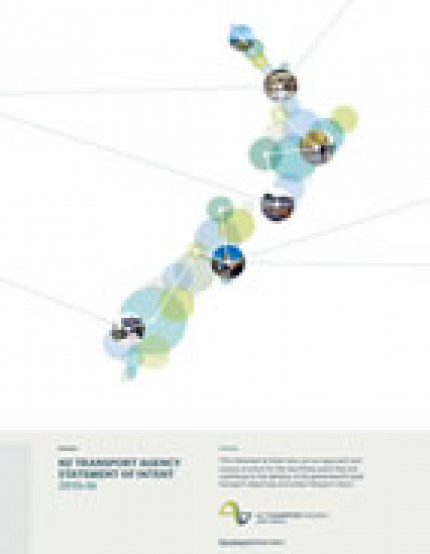
| Previous page | Table of contents | Next page |
This section states the key assumptions under which the NZTA operates and key decisions are made. Assumptions fall into two categories – those that affect funding and those that affect procurement. All assumptions reflect a going concern basis.
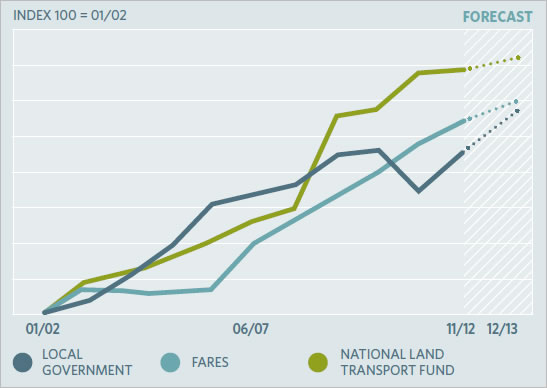
Improving revenues and continued fiscal prudence is expected to improve the financial standing of local government and its ability to co-invest.
Increases in public transport patronage that result from capacity improvements are expected to support growth in revenues.
Improving levels of economic activity to support more travel and higher revenues. Should the economy not perform to expectations there is a risk that actual revenues could be lower than previously forecast.
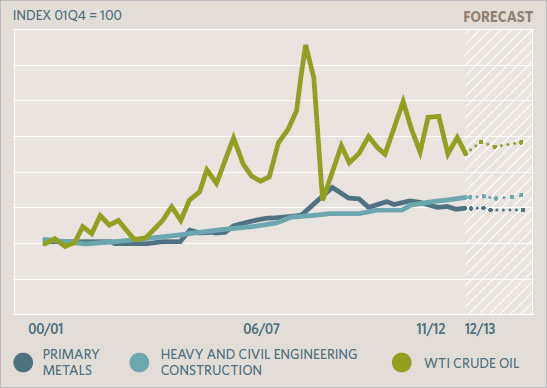
Increasing activity in Canterbury and more demand for housing is expected to increase construction costs.
Patchy, but improving global economic outlook and a strong NZ$ is expected to limit domestic price increases.
NZ$ strength expected to absorb increases in US$ crude oil prices.

Contained NZ$ oil prices, improving economic growth and major capacity improvements are expected to further boost travel demand by passenger vehicles.
Contained NZ$ oil prices and improving economic growth in the region is expected to reverse the recent declining trend.
Recovery efforts in the region are expected to support increases in passenger vehicle demand.
Slower income growth in some regions is expected to adversely affect passenger vehicle travel.

Expanding network capacity, increasing HPMV uptake, improving economic growth and more bus services on the Northern Busway are expected to increase heavy vehicle travel.
Improving regional economic growth prospects and increasing HMPV uptake is expected to support freight activity.
Rebounding economic activity, more trade through the Port of Lyttelton and other capacity improvements are expected to support heavy vehicle travel.
Growth in primary production is expected to boost freight activity in selected regions.
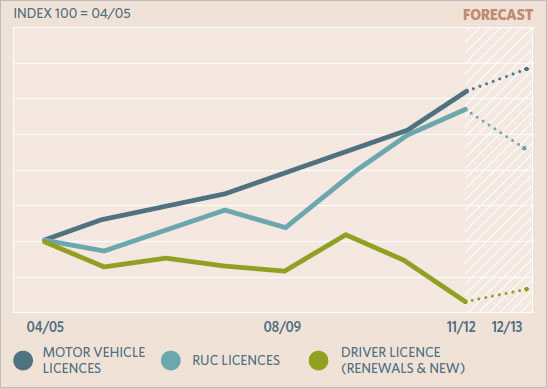
Increases in the size of the vehicle fleet and a continuing trend to short-term licences (as a result of declining affordability) are expected to boost transaction volumes.
Recent changes to the road user charges system are expected to lead to a drop-off in transaction volumes.
Increases in learner licence applications are expected to partially reverse a recent declining trend.
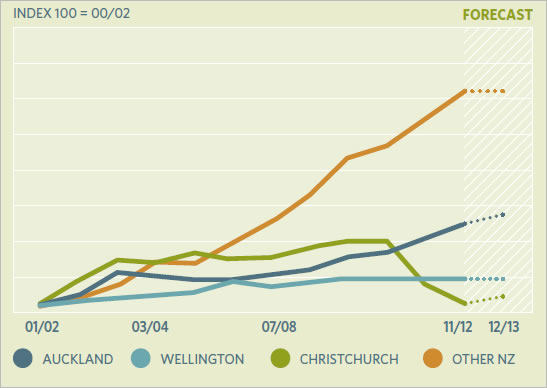
Significant investment in network capacity (both infrastructure and services) is expected to boost rail and bus patronage numbers.
Upgrades to the network (both infrastructure and services) are expected to result in slightly more people using this long established public transport system.
Alterations to the network (including new destinations) that lead to changes in patterns of use are expected to increase public transport patronage.
Investment in network capacity will be focused on the main population centres.
The NZTA produces 20 outputs, each of which contributes to our desired long-term goals in different ways. The following table sets out the contribution of our outputs to our desired long-term goals.
| Goal 1: | Integrating one network |
| Goal 2: | Shaping smart transport choices |
| Goal 3: | Delivering highway solutions |
| Goal 4: | Maximising returns for New Zealand |
| Major/primary contribution | |
| Minor/secondary contribution | |
| Note: | Where there is no dot, there may still be a small contribution |
| Function | Output | Goal 1 | Goal 2 | Goal 3 | Goal 4 |
|---|---|---|---|---|---|
| Planning the land transport network | Management of the funding allocation system | ||||
| Transport planning | |||||
| Sector research | |||||
| Providing access to and use of the land transport system | Licensing and regulatory compliance | ||||
| Road tolling | |||||
| Motor vehicle registry | |||||
| Road user charges collection, investigation and enforcement | |||||
| Refund of fuel excise duty | |||||
| Managin the state highway network | New infrastructure for state highways | ||||
| Renewal of state highways | |||||
| Maintenance and operation of state highways | |||||
| Investing in land transport | Public transport | ||||
| Administration of SuperGold cardholder scheme & enhanced public transport concessions for SuperGold cardholders | |||||
| Road safety promotion | |||||
| * Road Policing Programme (NZ Police output) | |||||
| * New and improved infrastructure for local roads | |||||
| * Renewal of local roads | |||||
| * Maintenance and operation of local roads | |||||
| * Walking and cycling | |||||
| * The NZTA does not deliver these goods or services directly. These output classes receive NLTP investment funds. Actual outputs are delivered by approved organisations. Measurement of NZTA performance, in relation to investment output classes, can be found in the management of the funding allocation system. | |||||
The statement of forecast service performance contains three types of measurement – value for money, service quality and customer satisfaction. Taken as a set, they provide a holistic picture of the NZTA’s service delivery and investment performance.
 View larger version (JPG, 316 KB)
View larger version (JPG, 316 KB)
| Previous page | Table of contents | Next page |